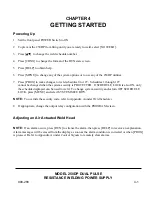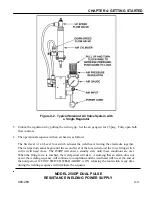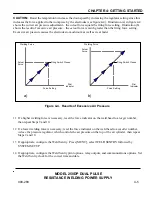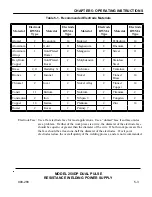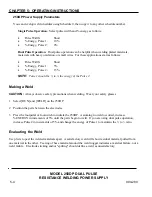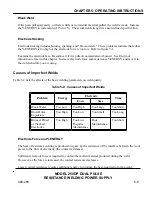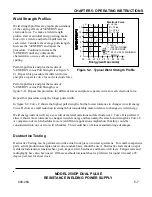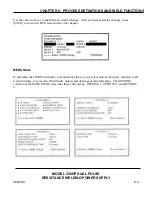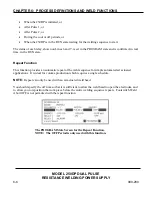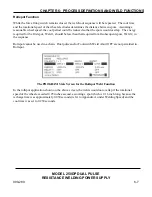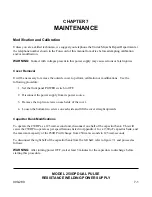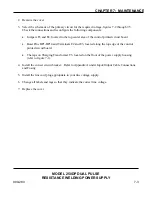
CHAPTER 5: OPERATING INSTRUCTIONS
MODEL 250DP DUAL PULSE
RESISTANCE WELDING POWER SUPPLY
990-280
5-5
Weak Weld
If the parts pull apart easily, or there is little or no residual material pulled, the weld is weak. Increase
the %ENERGY in increments of 1% to 2%. The actual weld strength is a user defined specification.
Electrode Sticking
Electrode sticking includes burning, sparking, and "blown welds." These problems indicate that either
the %ENERGY is too high or the electrode force is too low. Refer to figure 5-1.
Examine the electrode face. Resurface it if it is pitted, contaminated or burned. See
Electrode
Maintenance
later in this chapter. Increase electrode force and/or decrease %ENERGY and save it to
the weld schedule you are using.
Causes of Imperfect Welds
Table 5-2 lists the effects of the basic welding parameters on weld quality.
Table 5-2. Causes of Imperfect Welds
Electrode
Problem Energy
Force Size
Time
Weak Weld
Too Low
Too High
Too Large
Too Short
Blow Holes.
Expulsion.
Too High
Too Low
Too Small
Too Long
Burned, Pitted
or Cracked
Electrodes
Too High
Too Low.
Requires
Maintenance
Poor
Maintenance
Too Short
Electrode Force and %ENERGY
The heat of resistance welding is produced, in part, by the resistance of the interface between the work
pieces to the flow of electricity (the contact resistance).
Sufficient electrode force is required to contain the molten material produced during the weld.
However, as the force is increased, the contact resistance decreases.
Lower contact resistance requires additional energy to produce the heat required to form a weld.





